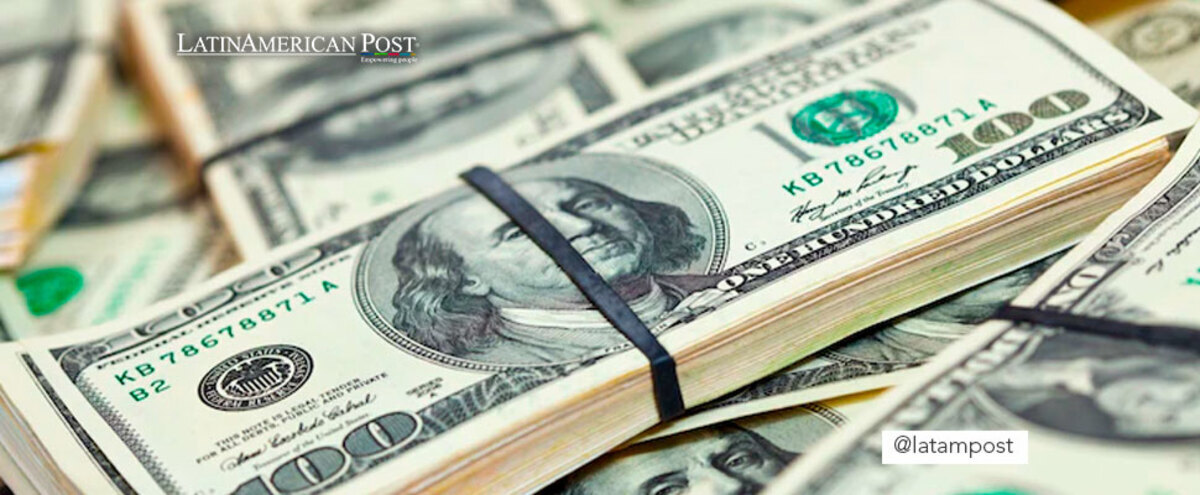Why Is the Price of the Dollar Increasing in Latin America?
The price of the US currency is breaking records in several countries. Why is the dollar rising? .

Photo: Freepik
LatinAmerican Post | Santiago Gómez Hernández
Listen to this article
Leer en español: ¿Por qué el precio del dólar está disparado en Latinoamérica?
In recent months, the price of the dollar seems to have skyrocketed. Economies such as Argentina, Colombia, and other countries in Latin America have been hit and seem to feel that the ceiling of the US currency is not close.
However, despite what many think, this phenomenon of devaluation of local currencies is not caused by a single factor. On the contrary, there are macroeconomic consequences and global trends that have caused the price of the dollar to rising, as well as local and national policies and events that exacerbate this problem.
But first, to understand the reasons, it is important to understand what devaluation means and why this happens. The easiest way to understand price variation is through the law of supply and demand. So, if a person has a peso (be it Argentine, Colombian, or Mexican) and many other people want to buy it from him because there are not many available in the market, the person who owns the peso can sell it for a higher amount than expected. This happens because the demand for the peso is greater than the supply. Now, if there are hundreds of people wanting to sell pesos, but there are hardly any buyers, they will have to wait to sell their pesos for a smaller amount to find a buyer. This, in broad strokes, and without detailing the oversupply or overdemand, is how the foreign exchange market works.
But to understand the current context, it is necessary to know what are the various reasons why the US dollar has become more expensive.
Uptrend
Despite what many consider, the price of the dollar has been on an upward trend (of raising its price) with respect to Latin American currencies for years. Since 2014, when there was a crisis of raw materials, most developing economies suffered a reduction in exports, since being based on exploitative and raw material industries, the price reduction made the dollar scarce. Both Colombia, Brazil, and Argentina (not to mention the bolivar in Venezuela) suffered large falls that are still being felt today.
Read also: Euro on the ground: the Latin countries that will suffer the consequences
For example, in 2004, the dollar was quoted at 2.93 Argentine pesos. Today, July 2022, there is a value of 127.36 Argentine pesos for every US dollar. In Chile, in 2008, each dollar was quoted at 430 Chilean pesos. Currently, it is at a historic 993 pesos, touching the barrier of 1,000 Chilean pesos. In Colombia, in 2008, for one dollar you could buy 1,719 Colombian pesos. Today the barrier of 4,500 has come to pass, also a historical ceiling. And in the South American mega-power, Brazil, in 2008, one dollar was equivalent to 1.6 reais. Today, the price reaches 5.38.
This shows that Latin American economies continue to be much weaker and dependent on the export of raw materials, be it lithium, copper, soybeans, or oil.
The Rise in Interest Rates by the Federal Reserve
The Federal Reserve is perhaps one of the most important financial organizations in the world and has the greatest impact on the monetary system. However, it is a completely unknown entity for most Latin Americans. The Federal Reserve is in charge of the monetary policy of the United States. The board of directors of this organization can decide to print more dollars or raise the interest rate.
In May, the Federal Reserve announced the increase in interest rates by 0.5 points, reaching close to 1%, the largest increase in years. Interest rates are the ceilings by which banks can generate between banks. This makes loans and credits more profitable and generates an investment flow.
World Recession
Precisely, due to the increase in interest rates that various Central Banks are carrying out, concerns have been raised about a possible global recession. This has caused the large European Stock Exchanges to fall, generating losses of over 3% throughout Latin America.
This is due to the fact that in times of global crisis, big capital prefers to take refuge in strong currencies, and, currently, the most powerful currency is precisely the dollar. This excess demand for US dollars has caused other economies, including Latin American and even European ones, to lose investment and capital and it is increasingly difficult to find dollars, which has generated a devaluation.
Political Uncertainty
Something that is also relevant is that the foreign exchange market, as well as almost any other stock market, is driven by speculation. There are so many bets that many equate it to a casino. Investors here are driven more by speculation than by real facts. So, the leftist governments that have recently come to power in Latin America (Peru, Chile, and Colombia) have also suffered a devaluation of their currencies for the simple fact that the new or future presidents have a discourse that is reluctant to private investment.
However, despite the fact that none of the presidents has promoted policies of expropriation or rejection of foreign investment, the big international capitals play not invest in those countries because they feel that there are no necessary guarantees. This is why it is necessary for governments, central banks, and presidents to send messages of tranquility and economic stability, in this way, the markets will not directly punish these countries.
The reasons why the dollar is skyrocketing are diverse and this demonstrates the need for governments to promote public policies, especially if a possible global recession is to be prevented. However, at present, national governments will have little room for maneuver, since the thrusts and the motives are external.




